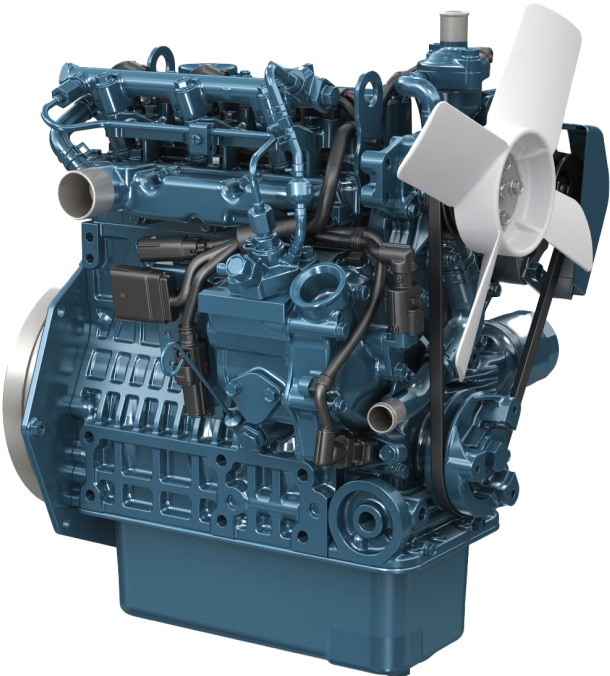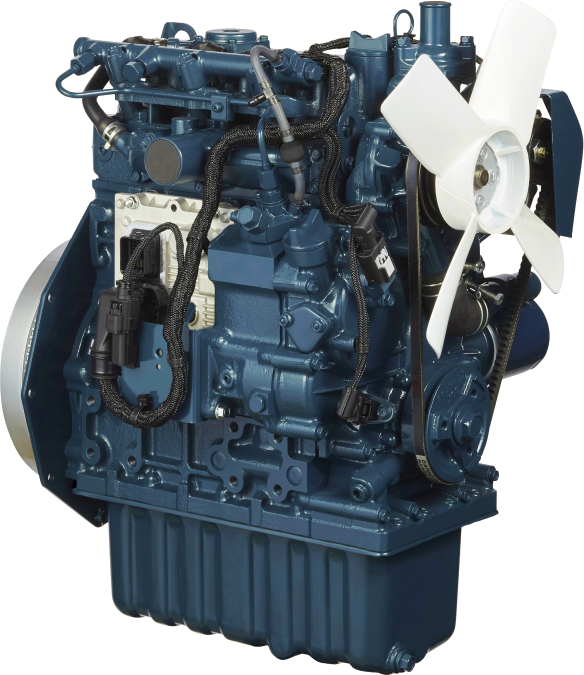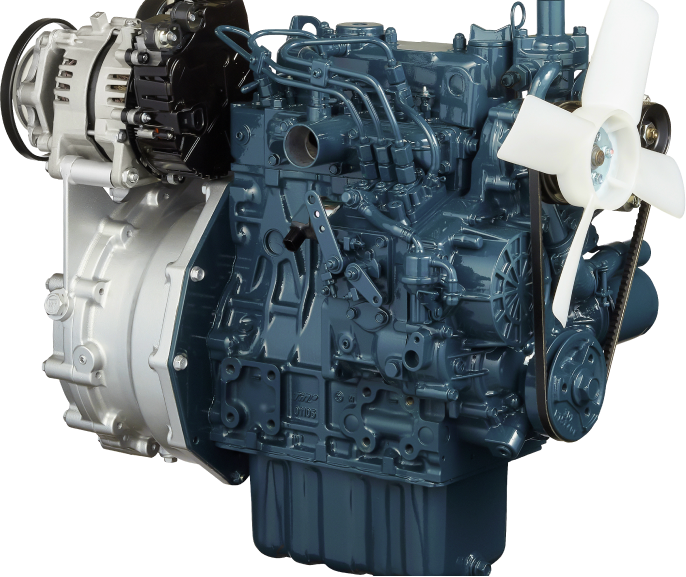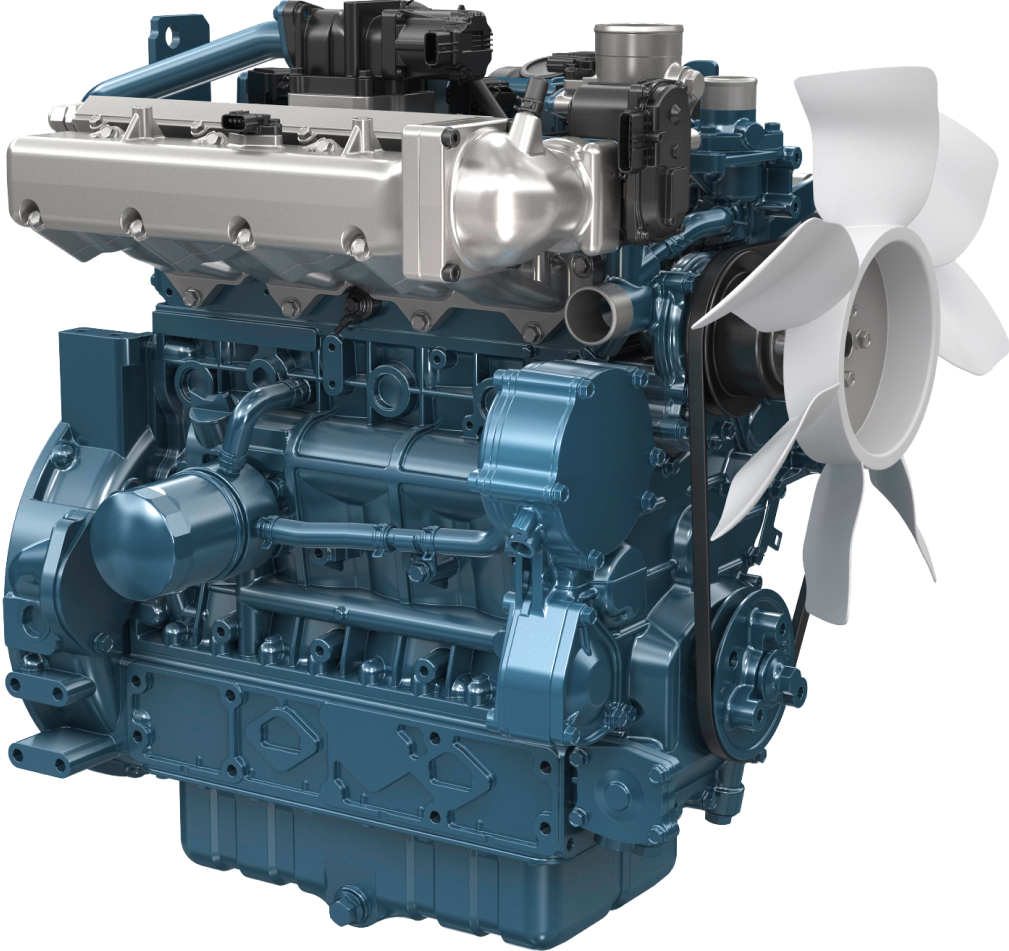- JP
- EN
/

With climate change having become an issue for our society, global long-term goals have been set and efforts toward finding solutions are picking up speed. Creating a carbon-neutral society is key to resolving these issues. Kubota's customers manufacturing industrial applications are also faced with the challenge of reducing their environmental impact. Kubota's aim is to deliver low-carbon and decarbonized engines that meet the needs of our customers.
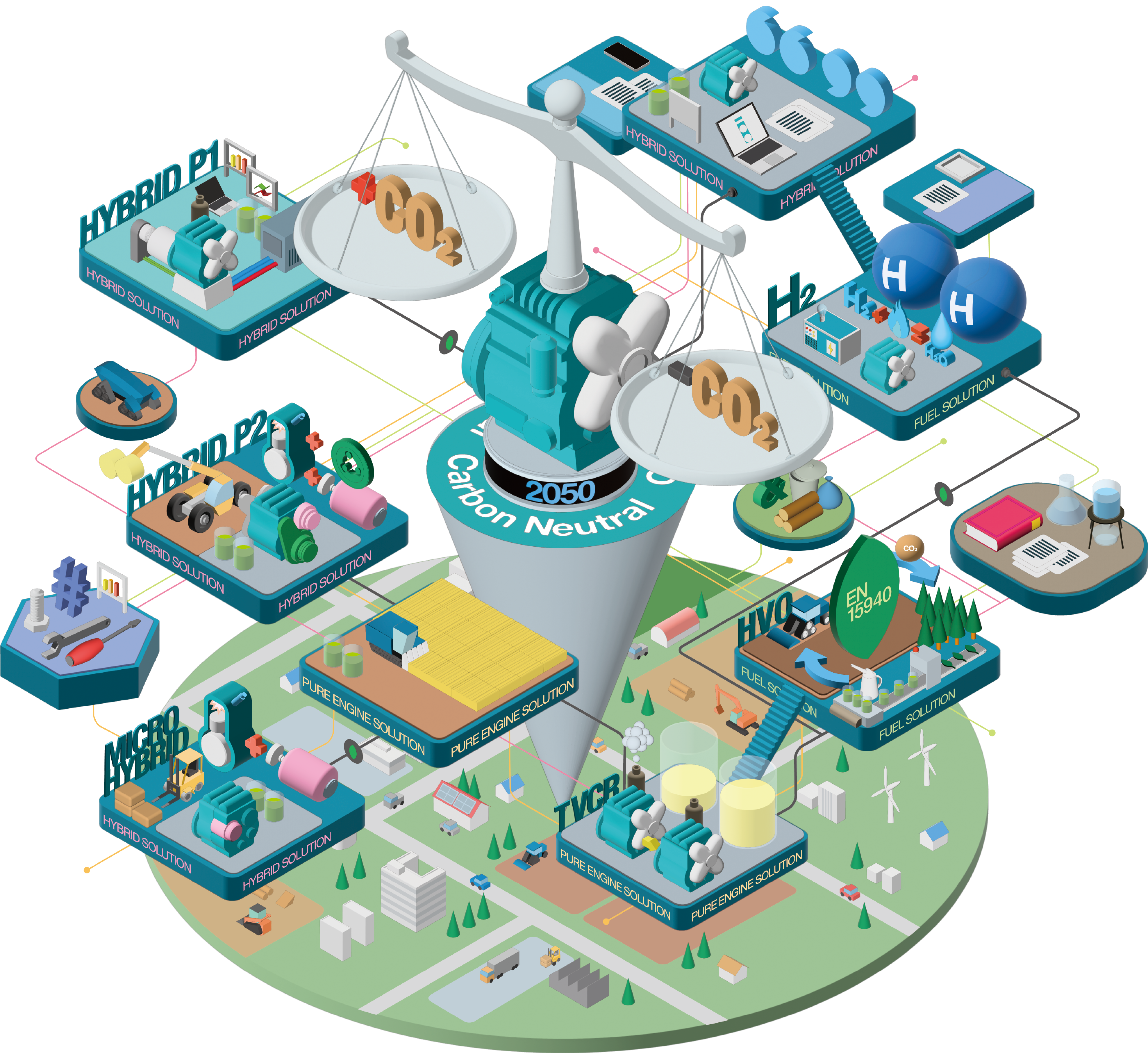
Kubota Engine Toward Carbon Neutrality
To achieve carbon neutrality or net zero emissions
Kubota is promoting our three initiatives: "Pure Engine Solution," "Hybrid Solution," and "Fuel Solution."

Our Solutions
01
Pure Engine
Solution
Aiming for further fuel efficiency of our existing engines

We aim to improve the combustion efficiency of existing engines and reduce engine CO₂ emissions.
D902-K / D1105-K
In 2021, we announced a technology called TVCR that improves combustion efficiency in small engines. The electronic control contributes to clean exhaust gas, low fuel consumption, highly efficient work, and ICT needs such as automation and unmanned operation. It also suppresses output power drop when using HVO and maintains high engine performance.
*HVO: Abbreviation for Hydrotreated Vegetable Oil. A type of paraffin fuel that is refined through a process of hydrotreating biomass.
02
Hybrid
Solution
Kubota engines that takes advantage of electric motors
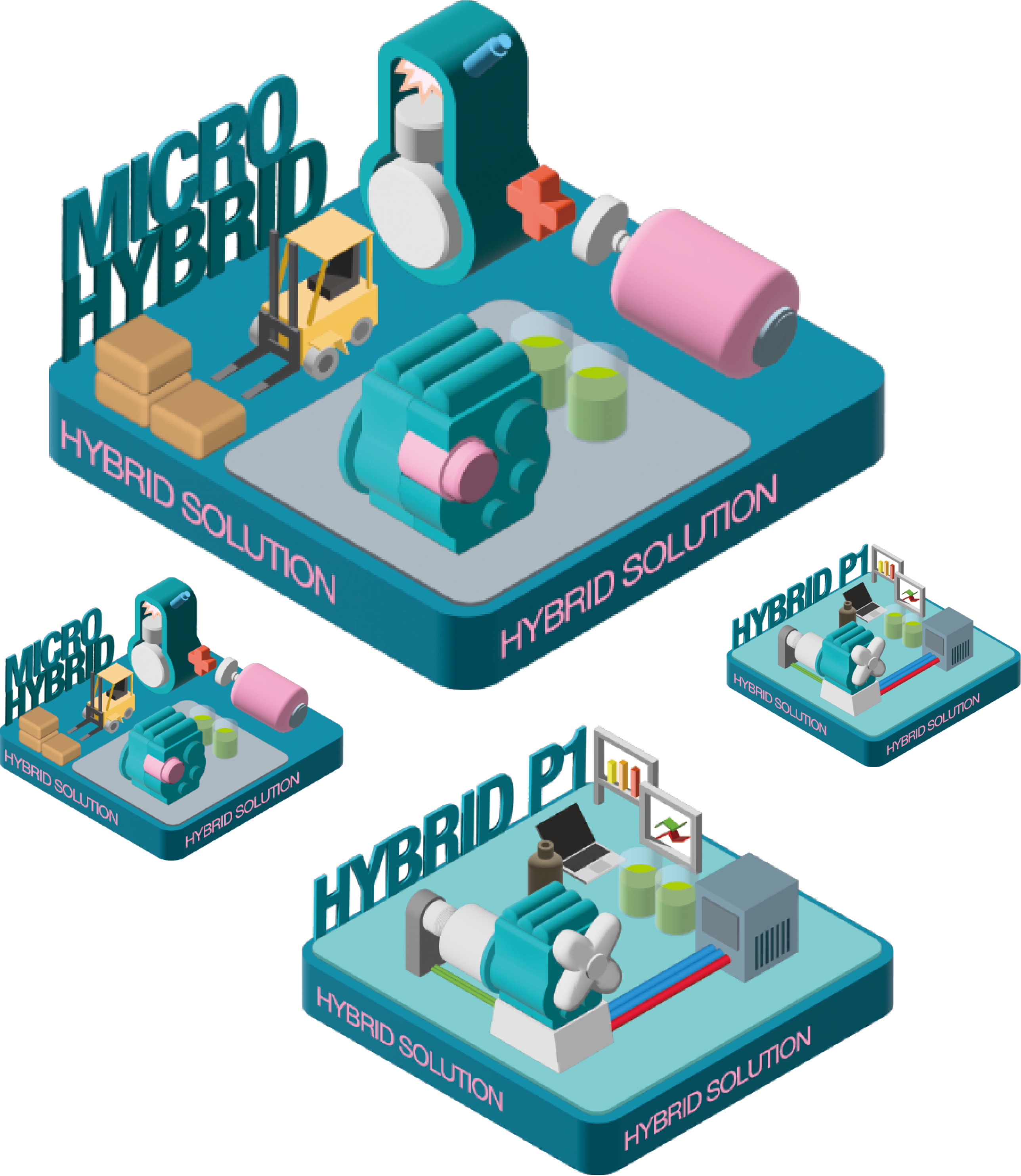
Engines that utilize electric motors are developed based on Kubota's knowledge of installing engines in off-road machines/applications.
Micro hybrid(P0)/ P1 hybrid
An electric motor with a maximum output of 10kW is attached to the engine, providing instantaneous output assistance in response to momentary high loads. This makes it possible to select the engine based on frequently used low to medium load range, rather than adjusting it to the momentary high loads. This engine downsizing can reduce the amount of exhaust gas.
03
Fuel
Solution
Development for the future that is unique to Kubota, which has been responding to multi-fuel so far
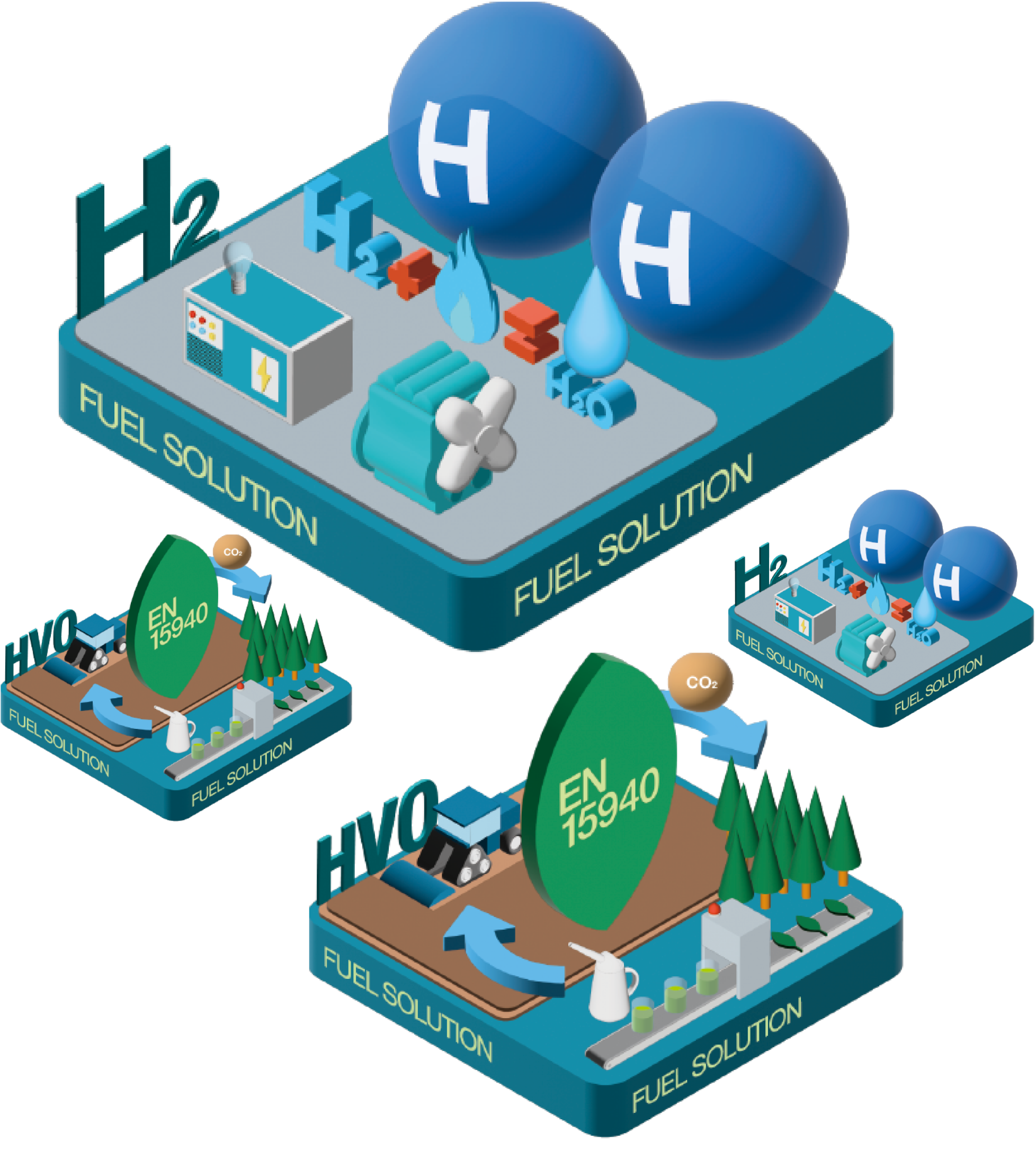
Kubota is developing hydrogen engines. We will contribute to the realization of carbon neutrality with our technologies, including diesel engines that are already compatible with alternative fuels.
Hydrogen Engine
Kubota announced its development of a hydrogen engine and will continue it. Hydrogen does not emit CO₂ when it reacts with oxygen to produce energy, emitting only steam, and so is considered to be a zero-carbon energy source, which is a fuel that does not emit greenhouse gases.
Difference between fuel cells and hydrogen engines, which are both powered by the same hydrogen
Fuel cells
Combine hydrogen with oxygen in the air to produce the water and electricity used to power electric motors.
Hydrogen engines
Power machines via internal combustion engines, which generate thermal energy by combining hydrogen with oxygen in the air, resulting in combustion explosions.
Kubota is working on developing the latter — internal combustion engines.
Alternative Fuel
All of Kubota's diesel engine models, including EU Stage V standard-compliant models, can make use of paraffinic fuels that conform to European Standard EN 15940.

What are alternative fuels?
The term "alternative fuels" refers to energy resources that can replace coal and oil. These are mostly used in automobiles, aircraft and industrial machinery, and include natural gas, methanol, ethanol, LPG, DME, biofuel and hydrogen.
Advantages of alternative fuels
As well as emitting less CO₂ than fossil fuels, they are an easy option for anyone considering alternative fuels, as it is easy to make the switch over to alternative fuels for machinery that uses fossil fuels.
Types of alternative fuel
There are many different types of alternative fuel, and these are divided into different categories based on their production processes and compositions. A primary example is fatty acid methyl ester (FAME), which is made from waste cooking oil (vegetable oil), and another alternative fuel that is growing in popularity is hydrotreated vegetable oil (HVO). HVO is also made using vegetable oil, and undergoes a hydrogenation process, resulting in a fuel with similar properties to diesel fuel. These types of alternative fuels are also called "paraffinic fuels."
What are paraffinic fuels?
The quality and safety of paraffinic fuels is regulated internationally by such standards as European Standard EN 15940. This standard is primarily concerned with the flash points, lubricative properties and content of fuels, and it is one of the standards that regulates the use and supply of paraffinic fuels within the European Union. It appears that there are no major differences in properties between paraffinic fuels and conventional diesel, and they are beginning to penetrate the market, being used in automobiles and industrial machinery.
Alternative fuels and carbon neutrality
Many hold the opinion that using fuels with low CO₂ emissions and ensuring the longevity of machinery will help to effectively eliminate carbon emissions without needing to resort to electric power. Alternative fuels will be an important energy resource, and they also may play a major role like fossil fuels so far.

